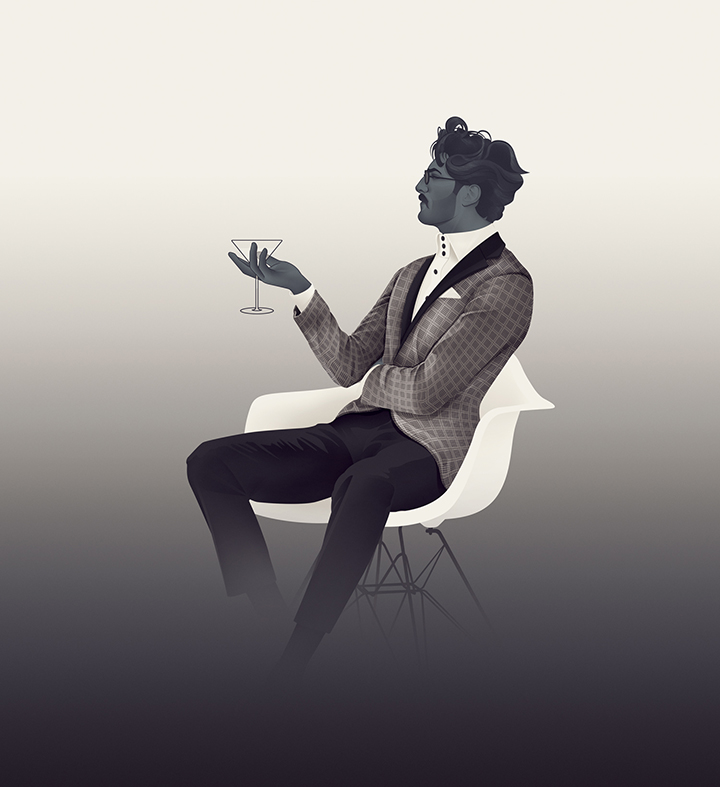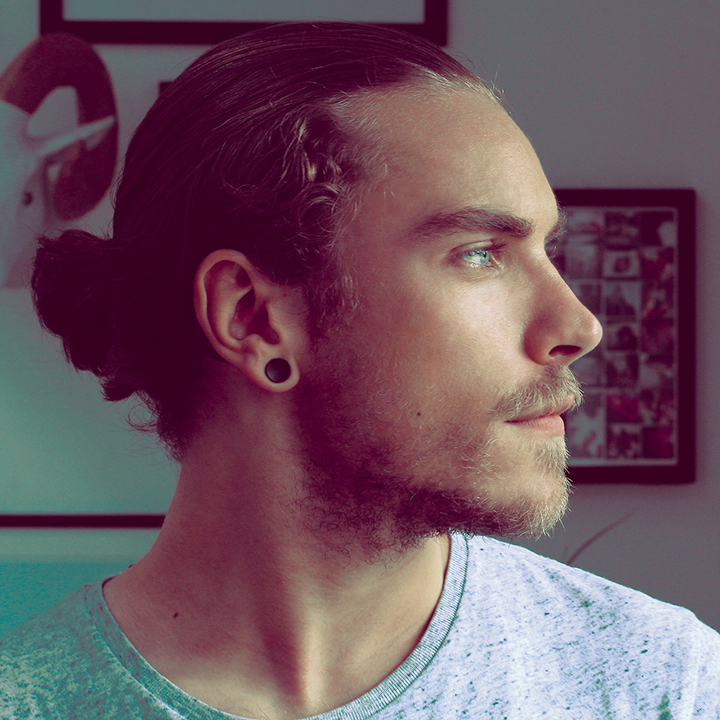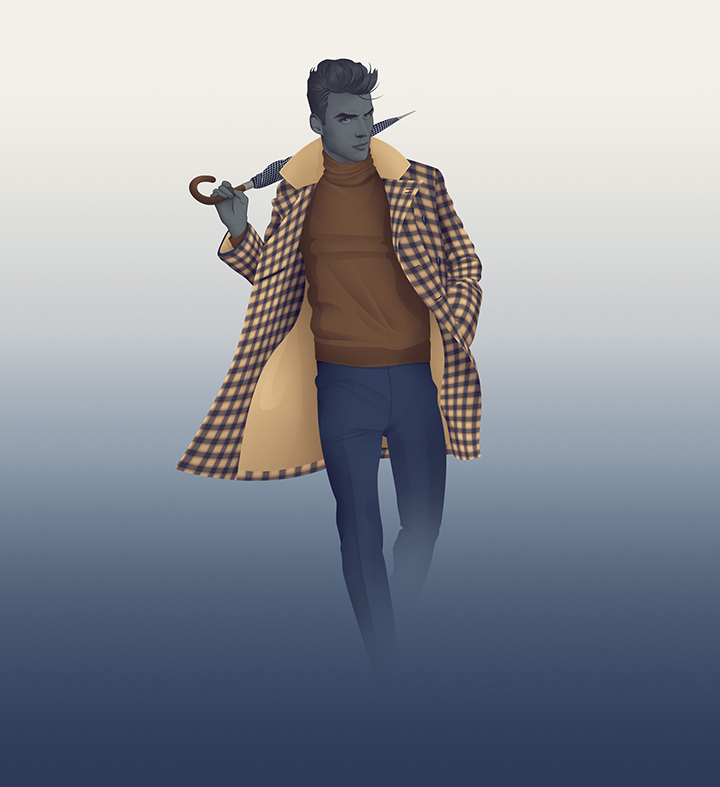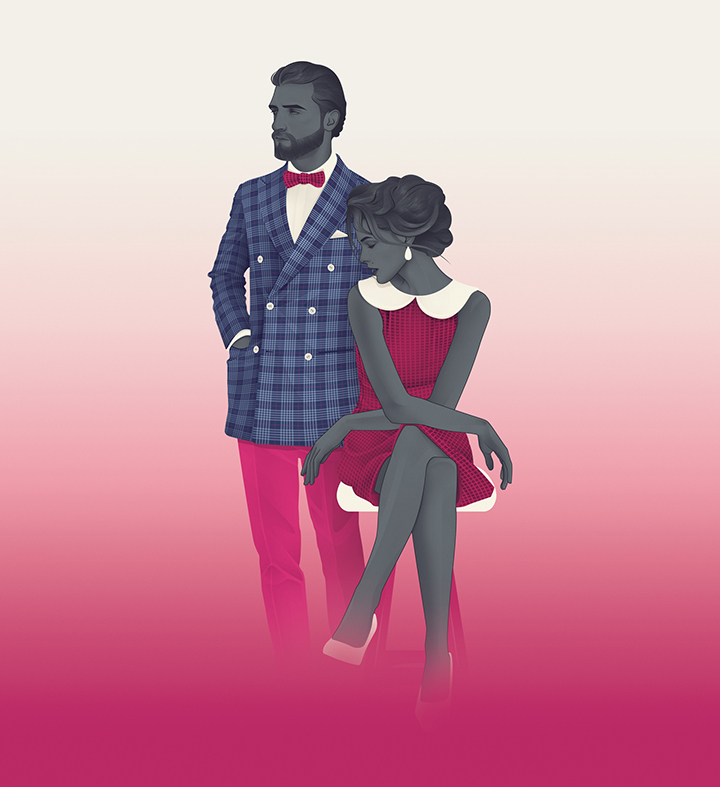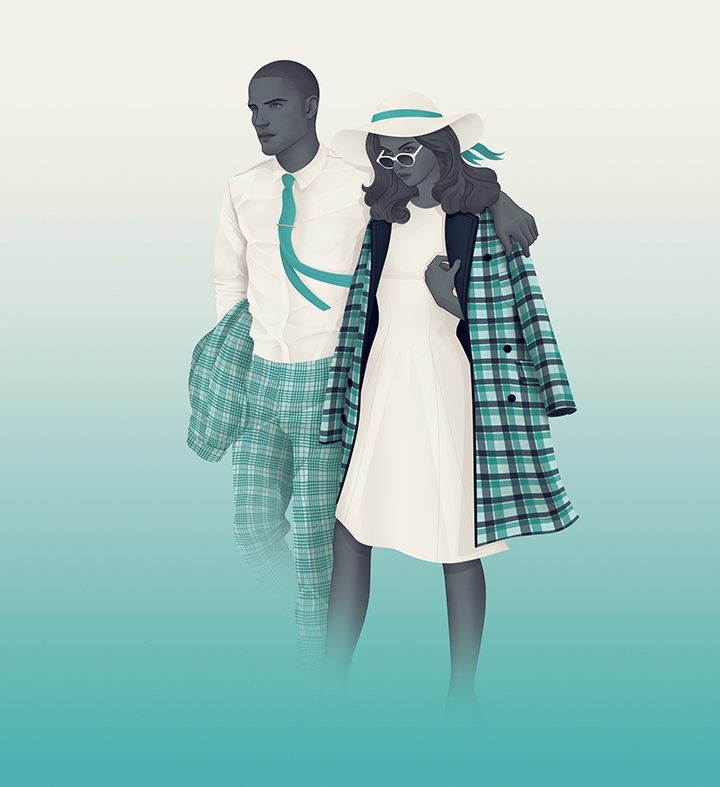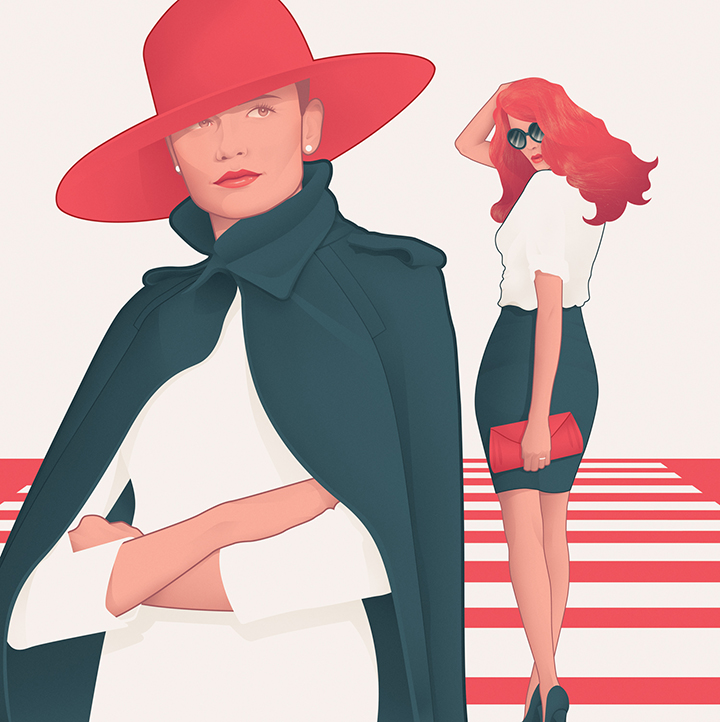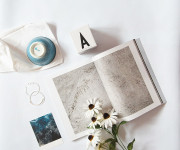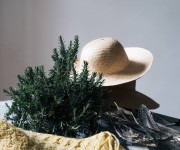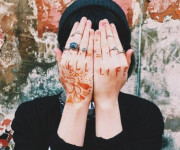The world of art is all about surprises and finding something that would shake you even if it is for just a second. When I heard about Jack Hughes I was intrigued and keen to learn more about who he is and what he does. This young man is well known for his exception taste for illustrations. His works are both realistic and cartoonish at the same time. Moments from daily life are so natural and flawless that without even thinking about it you sink in a Jack Hughes’s dimensions of reality. Jack favours social situations and explores the possibilities of what humans should be like.
How would you define yourself as an illustrator? What makes you special?
Tough one, I’m not entirely sure there’s much about me that makes me ‘special’, there are hundreds of talented illustrators out there, all different in their own right. What sets me apart from the rest? I suppose my style, my approach and there are some commissions I wouldn’t take on out of principle, it’s those small elements that set up apart.
What did encourage you to choose illustration instead of any other form of visual arts?
On my foundation degree I very nearly chose graphic design instead of illustration; I was stuck at that crossroads for what felt like forever. A few tutors were inspiring enough for me to pick, eventually, illustration; the career prospects were less favorable than if you were a graphic designer, but as my tutors had said, my talents would be wasted otherwise.
Could you name a few of your favorite illustrators and artists that have the biggest influence on you?
Aubrey Beardsley and Gruau are always brilliant to look at. To be honest, I don’t really look to other illustrator’s work for influence, I’m too aware of subconsciously copying. I draw my inspirations from elsewhere – fashion, design, furniture, architecture etc. Avenues that lend themselves to illustrations indirectly.
In one interview you mentioned that two things – science and mid-century design, influence you the most. Where does it come from? Why does it have so much power for you?
Aside from simply saying ‘I just like how they look and are’, I simply can’t explain my attraction to them. Taste is an unexplainable thing; if we all had the same taste, the world would be a very boring place (unless of course everyone had the same taste as me, in that case it would look amazing). There’s a beauty to science that isn’t quite as obvious and arresting as a Manet or a Botticelli, the beauty requires some work on your behalf, it can be interpreted and explored in a multitude of different art forms – isn’t that incredible?
Do you attempt to analyze any kind of specific topics with your work?
Only if the client has expressed a need for it or the brief I’m given is open to interpretation. The majority of my work is solely an aesthetic; it’s there to capture a moment in time, to enhance a product. There isn’t space or a need for topics in my work.
Could you tell us a little bit about your working process? How do you come up with ideas and develop them?
Like I said before, it all depends on the brief and what the client is after. Some briefs are open to interpretation and it all depends on the vision of the art director, or the lack of vision – which in most cases can work out best for both parties. The majority of my work starts out its life in my sketchbook and the moves into Photoshop where I begin to rough up the compositions until I’m completely satisfied.
Many artists doubt that they are good/ efficient/ satisfying etc. enough. Do you face an anxiety like that?
All the time, the worst is when a really eager and appreciative art director commissions you, the pressure to not disappoint can be detrimental to the work you are doing. It’s never beneficial to compare yourself to others, but when you’re working in a competitive industry with established and ludicrously talented people, who are populating the marketplace, it’s hard not to. The best thing to do is to look at it as a plus, think of how fantastic and diverse the industry is, how talented some people can be, look at them as inspirations and use that to propel you onwards, no downwards.
You work with many famous companies and magazines. As an artist you probably have your own ideas about how a final illustration should look like while hiring company might approach to the same project in a totally different way. How do you manage to synthesize your and your client’s ideas?
Most of the time clients are happy to trust me, which is usually great, it gives me the freedom within a comfortable confinement to explore and work towards the best possible visual outcome I can summon. Occasionally, it can work the other way, art directors can be very intrusive, getting you to change the tiniest elements of the image, which sometimes works, but most of the time ends up feeling like it’s not your work, you were simply the hand that executed someone else’s idea. I’ve stopped bending over backwards so much for clients like that now, I’ll stand my ground, even if they know best, some need to learn to meet an illustrator somewhere in the middle, it’s a negotiation of sorts.
What are your current projects?
I’m working for on an advertising campaign for a luxury set of high-rise flats, which is challenging because not only is the workload demanding, they have to be perfect to make sure they don’t alienate any potential buyers. Also, I am going to art directing a shoot for a large fashion label and then illustrating the photos for the look book, something I am itching to make a start on, cannot wait!
How do you see the future of illustration? What would you like to change or develop in a certain direction?
I would like to see a healthier balance between photography and illustration; at the moment, it’s very much tipped in the favor of photography. Illustrations is seen as ‘risk taking’ simply because it’s more expressive and not quite as ‘safe’ as clicking a button on a camera is.
It has always excited me knowing how people perceive the world around them. Different professions, occupations or simply hobbies reveal new ways of seeing ourselves. I hope every reader took this opportunity and gain more knowledge about how an illustrator measures different situations, people and life. Thanks for sharing this with SwO magazine, Jack Hughes!

